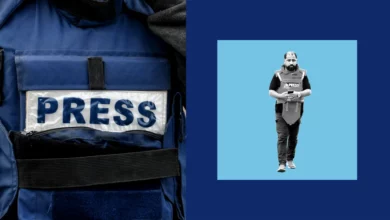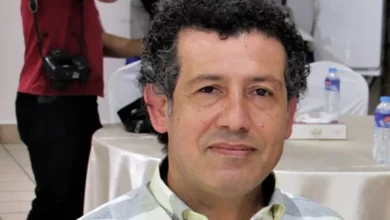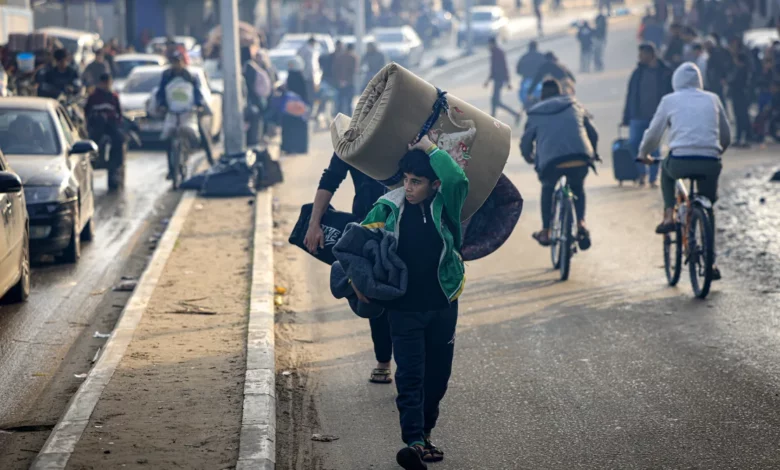
The seven-day Israel-Hamas truce ended on Friday after negotiations reached an impasse and Israel accused the Palestinian militant group of violating the agreement by firing at Israel.
The nearly eight-week war that preceded the lull in fighting caused widespread destruction and saw more than 14,800 people killed in Gaza, according to the Palestinian Ministry of Health in the West Bank, which draws its data from Hamas-run health authorities in the Gaza Strip. For the next round of fighting, however, the United States has made it clear to Israel that scale of devastation should not be repeated.
Whether Israel will listen is a different matter. Analysts say the war is bound to continue until Hamas is crushed, and it may be much fiercer this time.
The Israeli military’s announcement about the resumption in fighting came moments after the truce between Israel and Hamas expired. The deal saw the warring parties exchange hostages held in Gaza for Palestinians held in Israeli prisons.
Israeli Prime Minister Benjamin Netanyahu this week vowed that Israel would fight until the end. His government had informed the US before the truce ended that it intended eventually to turn its focus on the southern part of the enclave after fighting resumed.
Benny Gantz, who is part of the war cabinet, said Wednesday the fighting would “expand to wherever it is needed throughout the Strip. There will be no cities of refuge.”
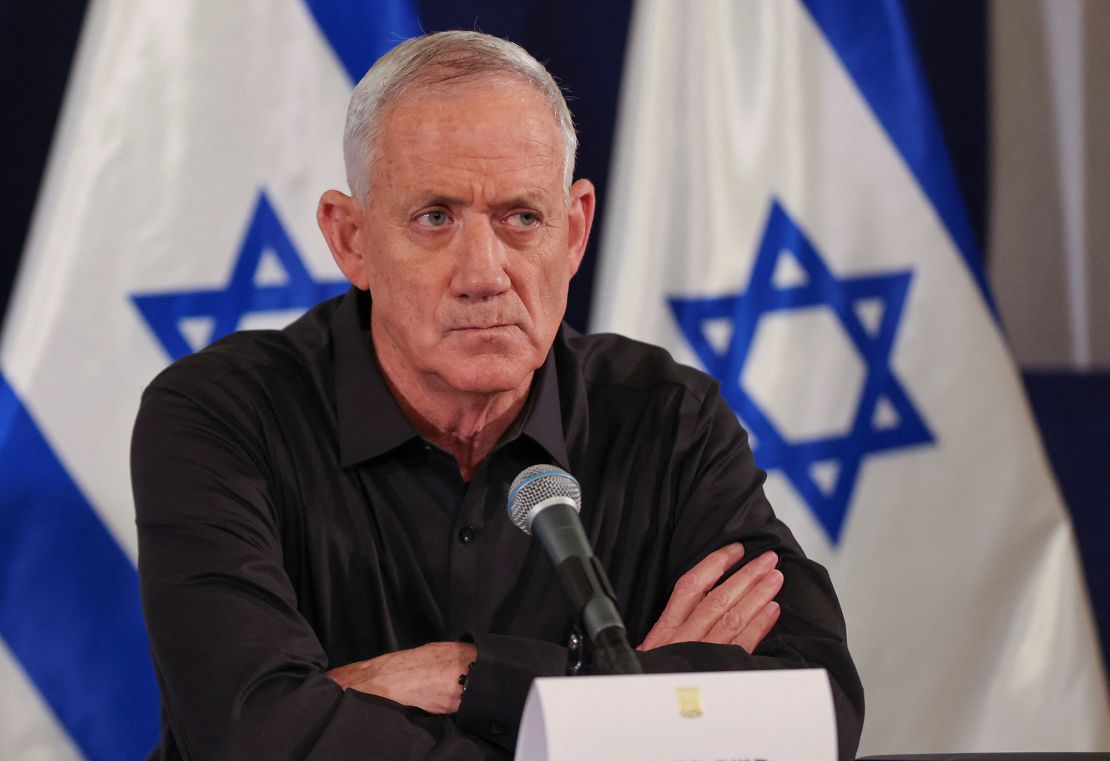
It is unclear if there will be another truce, but with more than 100 hostages still in Hamas captivity, it could theoretically be revived for several days if both parties agree to extend by one day for every 10 hostages released, analysts said.
The deal, however, primarily included women and children. Of the 137 people Israel believes are still in Hamas captivity, 20 are women and 2 are under the age of 18, the prime minister’s office said Friday.
During its October 7 attack, Hamas killed more than 1,200 in Israel and kidnapped about 240 others, Israeli authorities said.
Negotiations with Qatari and Egyptian mediators over the release of hostages held are ongoing, a source familiar with the talks told CNN, even after Israel’s announcement that it is resuming its operation.
Israel has paid “a big price” for the pause in fighting, Yaakov Amidror, a senior fellow at the Jerusalem Institute for Strategic Studies, who was previously National Security Adviser to Netanyahu, told CNN, noting that the truce “broke the momentum of the IDF and gave Hamas the ability to regroup.”
“We understood that, and we were ready to pay that price, because it is a price that should be paid for releasing the hostages,” he said, adding that Israel is prepared for more intense fighting to make up for lost time.
What happens next?
The US now is piling pressure on Israel to avoid mass civilian casualties in the next round of fighting.
“I underscored the imperative of the United States that the massive loss of civilian life and displacement of the scale that we saw in northern Gaza not be repeated in the south,” US Secretary of State Antony Blinken said in a televised news conference in Tel Aviv on Thursday.
Blinken said he “made clear” to Israel that it must put in place humanitarian protection plans and safeguard hospitals, power stations and facilities. He said Netanyahu had agreed to take steps to protect civilians.
How that will manifest remains unclear.
Frank Lowenstein, who worked as Special Envoy for Israeli-Palestinian Negotiations under US President Barack Obama during the 2014 Israel-Gaza war, told CNN that whether Israel heeds the US’ advice “will be a very strong indication of how much influence we actually have over the Israeli(s).”
If Israel takes the same military approach in the south as it did in the north, “it could lead to increasingly open disagreement with the Biden administration,” he said. “Given that the Israelis probably want to avoid a big public rift, there’s a reasonable likelihood they will take at least some steps to moderate their approach in the next phase.”
Biden administration officials have been discussing with their Israeli counterparts how to protect civilians who fled to southern Gaza, should the IDF target the area again, US officials told CNN earlier.
The options being considered include moving civilians who went south back up north once military operations there end, one senior US official told CNN. Israel has so far warned displaced Palestinians against returning north, saying the area remains unsafe.
It is unclear how hundreds of thousands of displaced residents can return to the north, where up to half of homes have been destroyed, satellite analysis shows.
On Friday, the Israel Defense Forces (IDF) dropped leaflets in Khan Younis, the biggest city in southern Gaza, calling it a “fighting zone” and telling residents to “evacuate immediately.”
Khan Younis, Rafah and the Middle governorates in the south are sheltering nearly 920,000 internally displaced people, says the United Nations Relief and Works Agency for Palestine Refugees (UNRWA), which estimates that some 1.8 million people – over 80% of Gaza’s population – have been displaced across the Strip since October 7.
Gershon Baskin, a former Israeli hostage negotiator who once acted as a channel to Hamas, said it would be difficult for Gazans to return to their homes in the north, as most of those neighborhoods are “not livable anymore.” He doesn’t however see the war ending without the Israeli military moving south, especially to Khan Younis and Rafah.
Urban warfare
If the fighting moves to the south, it will “definitely be different,” said Riad Kahwaji, founder and CEO of the Institute for Near East and Gulf Military Analysis, a strategy and security consultancy in Dubai.
That part of Gaza, Kahwaji told CNN, is densely populated. “This area was designated a safe area, and Israel had nearly a million of the Palestinians living up in the north relocate to the south under the pretext that the military operations are in the north, even though there was still bombardment in the south,” he said.
It is unclear what form Israel’s operation in the south would take, but Kahwaji said Israel may struggle to keep Western support as images of bloodshed and devastation pour out of Gaza.
“The images of destroyed buildings with babies being killed and women being dragged from under the rubble has severely tarnished Israel’s image,” he said.
With truce extensions, Hamas may have hoped that international pressure would pile on Israel to avoid a resumption of the war, said Baskin, the former negotiator, noting that Israeli society is overwhelmingly supportive of an operation that eliminates Hamas.
Lowenstein, the former US envoy, suggested that the immediate focus would likely be on “providing safe zones and passage in the south,” adding that it is nonetheless “far from clear how feasible that is,” as hundreds of thousands of displaced civilians are living “in a very small area.”
“And the already catastrophic humanitarian conditions will likely get even more dire as the weather gets worse and the health situation deteriorates further,” he said.
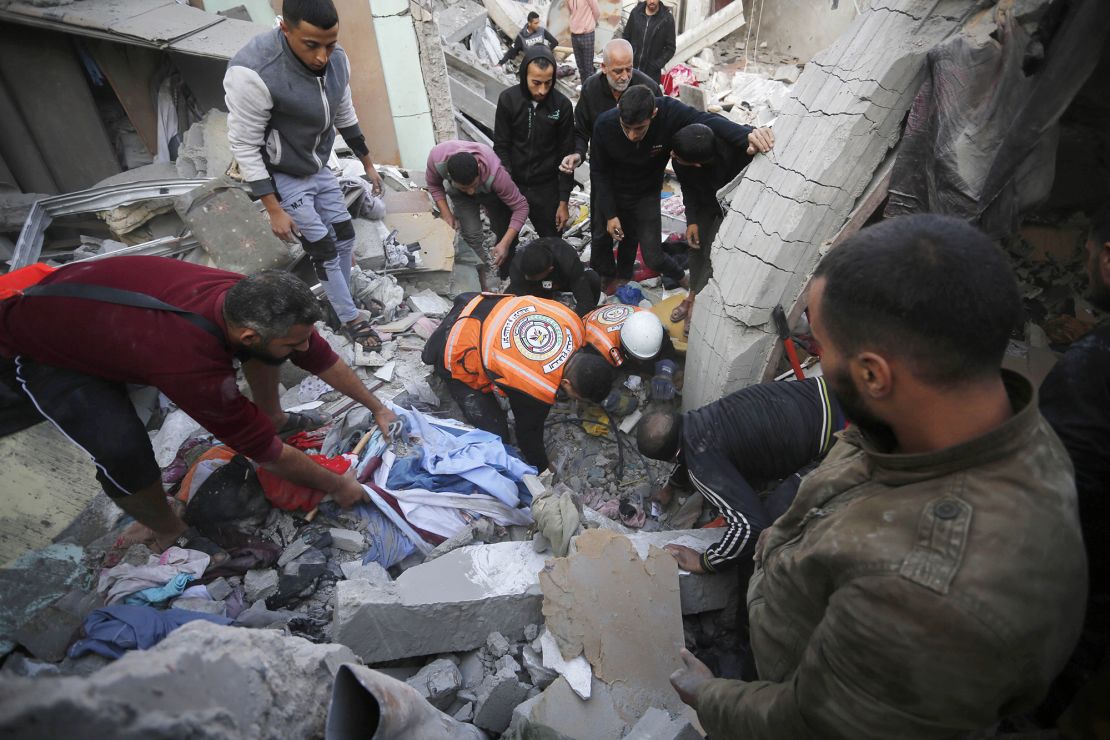
Kahwaji said one element likely to be a factor in Israel’s military calculations is the cost-benefit analysis of each tactic: ground operations versus air offensives.
Israel has primarily relied on airstrikes and targeted bombardment in its war on Hamas, which has spared it major troop casualties, he said. If it decides on a primarily ground-based offensive in the south to lessen civilian losses, it will prove challenging for its soldiers, he added.
“Urban warfare is the toughest warfare,” Kahwaji said. “It is regarded as the hell for any soldier on an offensive operation.”
Amidror, the former Netanyahu adviser, said that while Israel does what it can to minimize civilian losses, it cannot halt its military operation because Hamas uses civilians as “human shields.”
“Let us assume that there is no technical way to fight and destroy Hamas without harming civilians,” Amidror said. “What is your advice? To give immunity to Hamas because they are very successful in attempts to use civilians as human shields?”
“From our (Israel’s) point of view, Hamas doesn’t have any immunity, and we will destroy Hamas,” he said. “And if civilians in Gaza are paying a price for that, we are very sorry, but the question should be applied to Hamas.”
Additional reporting by CNN’s Stephen Collinson, Tamar Michaelis, MJ Lee, Alex Marquardt, Kaitlan Collins and Becky Anderson

